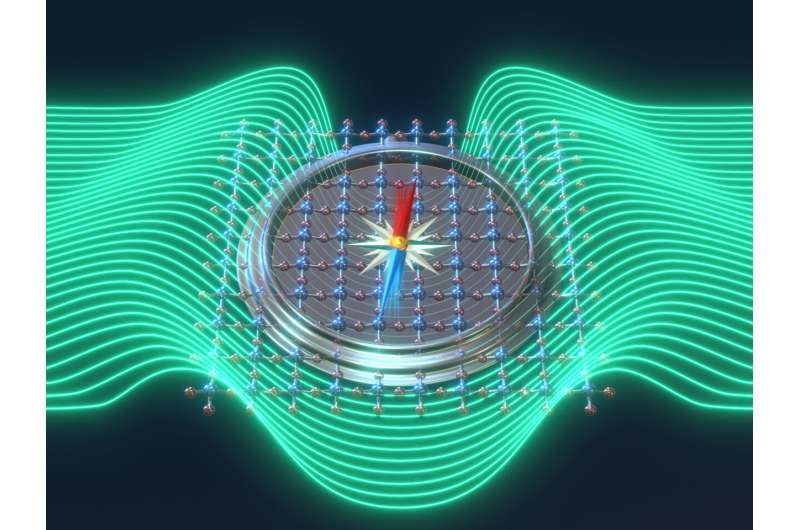Researchers at the Max Planck Institute for the Structure and Dynamics of Matter (MPSD) have developed an innovative method to study ultrafast magnetism in materials. They have shown the generation and application of magnetic field steps, in which a magnetic field is turned on in a matter of picoseconds.
The work has been published in Nature Photonics.
Magnetic fields are fundamental to controlling the magnetization of materials. Under static or slowly varying conditions, a material’s magnetization aligns with the external field like a compass needle. However, entirely new magnetization dynamics emerge when magnetic fields change on ultrafast timescales—faster than the material’s response time.
These rapid transients are of great interest for fundamental research into non-equilibrium states of matter and for potential applications in next-generation magnetic memory, where faster writing speeds are critical.
To address this challenge, the research team designed a novel superconducting device capable of producing ultrafast, unipolar magnetic field steps—sudden magnetic changes with picosecond-scale rise and super-nanosecond decay times.
“Our goal is to create a universal, ultrafast stimulus that can switch any magnetic sample between stable magnetic states,” says lead author Giovanni De Vecchi. “This breakthrough could drive advances in both fundamental science and technology.”
Harnessing superconductors for ultrafast magnetic steps
The team, led by Andrea Cavalleri, achieved this feat by rapidly quenching supercurrents in a superconducting YBa₂Cu₃O₇ thin disk exposed to an external magnetic field. Supercurrents naturally form to expel magnetic fields from superconductors.
“By abruptly disrupting these currents using ultrashort laser pulses, we could generate ultrafast magnetic field steps with rise times of approximately one picosecond—one trillionth of a second,” says fellow co-author Gregor Jotzu.
“Devising a method to track these magnetic transients in real-time was a major challenge,” explains co-author Michele Buzzi. The researchers placed a spectator crystal near the superconducting sample to achieve this. The crystal’s optical properties change in response to the local magnetic field.
This effect allows the team to track the magnetic field evolution by analyzing the polarization rotation of a femtosecond laser pulse.
“With this approach, we achieved sub-picosecond resolution and unprecedented sensitivity,” adds co-author Sebastian Fava.
While the current magnetic steps do not yet achieve complete magnetization switching, the researchers believe optimizing the device geometry could enhance the amplitude and speed of the magnetic field transients.
“With suitable improvements, we envision applications ranging from phase transition control to complete switching of magnetic order parameters,” says Cavalleri.
More information:
G De Vecchi et al, Generation of ultrafast magnetic steps for coherent control, Nature Photonics (2025). DOI: 10.1038/s41566-025-01651-y. www.nature.com/articles/s41566-025-01651-y
Provided by
Max Planck Society
Citation:
A new wave in ultrafast magnetic control (2025, April 2)
retrieved 2 April 2025
from https://phys.org/news/2025-04-ultrafast-magnetic.html
This document is subject to copyright. Apart from any fair dealing for the purpose of private study or research, no
part may be reproduced without the written permission. The content is provided for information purposes only.

